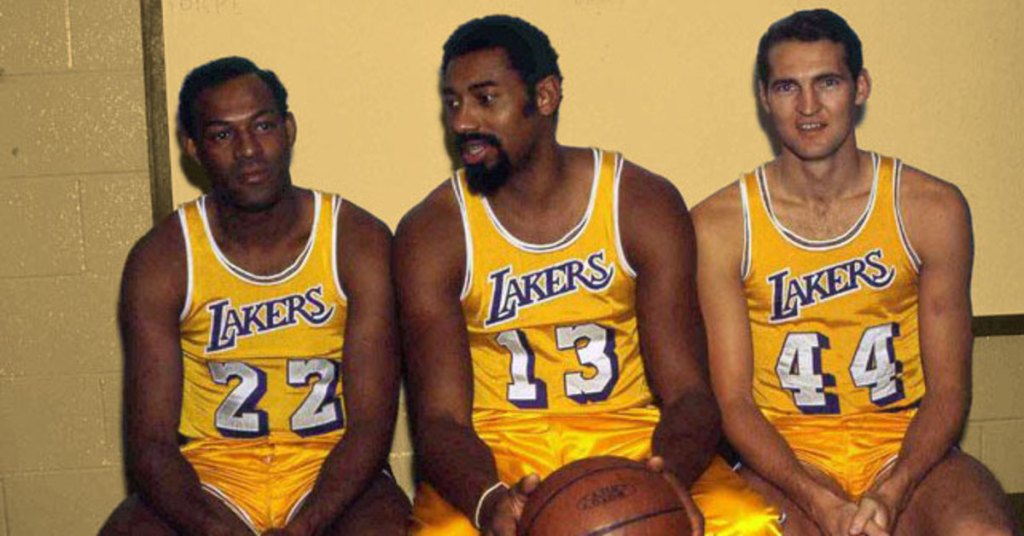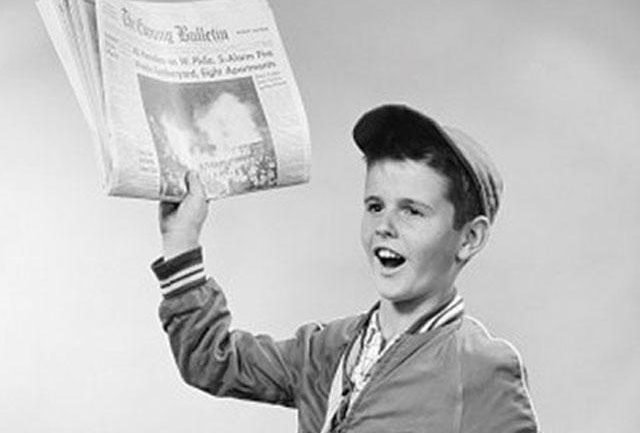What if we told you the history of Southern California sports can be explained by 101 numbers that have been worn on the front, back, or elsewhere on a jersey or uniform by some of the most influential athletes over the last, say, 101 years?

If that’s a bit too dramatic, we’ll dial it back.

In telling the story of how Southern California sports has come into existence and continues to dominate much of our attention, adoration and advertising dollars, we’ve found a common denominator.
From 00 to 0 to 50 to 99, and everything digit in between, it can be examined, appreciated and played forward.
Unlock the combinations and see where we get.
There are a couple of layers on this wedding cake to cut through. Knives out.

One approach: Call out a jersey number, and then link to it the first name you think about in Southern California sports history.
If it’s 22, 13 and 44, it’s Elgin Baylor, Wilt Chamberlain and Jerry West. Laker royalty.

Unless it’s Clayton Kershaw, Caleb Williams and Darryl Strawberry. Then we have to have a discussion. Let the superlatives commence.
What number represents the greatest collection of athletes in L.A.-O.C. history?
It’s likely No. 32 – Magic Johnson, Sandy Koufax, Bill Walton, Marcus Allen, Orenthal James Simpson, Jonathan Quick … that’s just the top layer of cheese in the French Onion soup bowl. So who owned it best?
There’s no wrong answer. Unless you follow the logic we lay out at a future date.
Take No. 34: Fernando Valenzuela, Shaquille O’Neal … and don’t forget Bo Jackson.
Bo knows he’s unforgettable.
By the way, did know the last jersey Bo Jackson wore the Los Angeles Raiders is in the National Baseball Hall of Fame?

The greatness of No. 8: Kobe Bryant. He wore it the first 10 years of his Lakers’ career.
The most tenacious No. 24: Again, Kobe Bryant. He wore it the last 10 years of his Lakers’ career.
Is there a story behind that we don’t know? Let’s figure it out.
We can do the same with numbers 6 or 23 – LeBron James has worn them both during his end-of-career-staycation in L.A. also. Which one gets honored in this list? Either? Neither? Both?
Kobe and LeBron are on the combo platter. The double-digit dynasty. Along with the aforementioned Jackson — who wore No. 22 for the California Angels in the year he finished his pro baseball career, 1994, thank to the MLB strike.
We can even group numbers together to form a memorable paring.
Nos. 68 and 86 were worn by USC football greats Mike and Marlin McKeever, twin brothers who grew up in L.A. No. 31 was shared by Basketball Hall of Famers Cheryl and Reggie Miller during their USC and UCLA days after growing up in Riverside.
The Los Angeles Rams’ “Fearsome Foursome”: Merlin Olsen, Deacon Jones, Rosey Grier and Lamar Lundy. That takes care of Nos. 74, 75, 76 and 85.
The Los Angeles Kings’ Triple Crown line from 1979 to 1984 — Marcel Dionne, Charlie Simmer and Dave Taylor. Messers 16, 17 and 18.
At one end of the spectrum, there’s No. 00 Benoit Benjamin.
To us, it’s fitting. He sizes up that number so well. As well as the franchise. Even to this point in time. Those who wore 0 also have their own list.

At the other end, No. 99 can be as much paying homage to the legend of Wayne Gretzky as it can be the modern day gladiator Aaron Donald. Or even draw a laugh at the man who brought “Mannywood” to Dodger Stadium for a spell.
The Lakers, by the way, also retired No. 99. Did you know why? By George, you should.
For this kind of exercise, what does an athlete have to do to claim ownership of a number? It’s usually star power, achievement, longevity, notoriety, and a very good story that’s unique to being in Southern California. Quirkiness and individuality. Who represents it best? Who’s best remembered for it and why one over another?
When Russell Carlton wrote his recent book, “The New Ballgame: The Not-So-Hidden Forces Shaping Modern Baseball,” he observed: “Baseball has always been a game played in two languages … two other tongues that we rarely acknowledge: a narrative language and a numerical one. For the most part they run alongside each other, intersecting where they need to.”
The point there is: You can say someone is a great hitter. You can also say someone is a .340 lifetime hitter. Both convey pretty much the same.
We’ll expand on that.
Beyond baseball, all sports have a narrative element and a numeric element of communication. The story-telling part, which connects modern day events to history, is rich in context. Numbers don’t always have to reflect statistics and data and analytics and projecting. They can tell a story unto themselves – particularly the numbers athletes pick to represent themselves on the field or on the court, or ones assigned to them as just making the roster. A low number and a high number speak volumes on the player’s experience in many cases. A common number in sports – 1, 7, 24, 32, 44 – takes the brain immediately to a player from our memory bank. It’s part of their identity and how we catalogue them in our experiences.
Numbers can take a whole new meaning from there. The story about why a player wears a number — the branding/marketing process that goes with an athlete’s image.
The idea for this project goes back to considering a way to update this exercise I did for the Loos Angeles Daily News in 2007. We used a lot of ink/real estate in the Sunday edition for it. It’s interesting that some 15 years later, it’s in need of some face lifting. Shohei Ohtani (17) and Mike Trout (27) are newcomers. And Mookie Betts (50) and Freddie Freeman (5).
The Kings retired No. 23 for Dustin Brown. The Dodgers finally retired No. 34 for Fernando Valenzuela. And people are still wearing No. 6 for the Dodgers who shouldn’t be.

I also generated a great list of “Hollywood” sports movie numbers – Charlie Sheen as Rick Vaughn in “Minor League” with No. 99 – which may have inspired Mitch Williams to wear No. 99 for the Angels eventually. They were both called “Wild Thing.” But note: Williams wore it with the Angels in 1995. The film came out in 1998.

Southern California’s teams of note, some going back to the 1940s, include the NFL’s Rams and Chargers, MLB’s Dodgers and Angels, NBA’s Lakers and Clippers, NHL’s Kings and Ducks, WNBA’s Sparks, MLS’ Galaxy and LAFC, NWSL’s Angel City FC.
Colleges go back further: Football, basketball, baseball, etc., from UCLA, USC, plus Pepperdine, Loyola Marymount, Cal State Northridge, Long Beach State, UC Irvine, Cal State Fullerton, UC Riverside …
Past teams to consider that came and went: The NFL’s Raiders in LA (1982-94), NASL’s Aztecs (1974-81), MLS’ Chivas (2005-14), WHL’s Los Angeles Blades, Pacific Coast League baseball’s Los Angeles Angels, Hollywood Stars, Arena Football League’s L.A. Avengers and L.A. Kiss, XFL Los Angeles Xtreme.


Humans and beasts qualify the same (don’t worry, we’ve only really got one non-human on the list. Well, actually two. We’ll explain later).
There are also unexplained stories: We know Pasadena’s Jackie Robinson wore No. 42 with the Brooklyn Dodgers — retiring before the team moved to L.A. At UCLA, he wore No. 28 for football and No. 18 playing basketball. What did he wear during his one and only year on the Bruins’ baseball team? The school doesn’t know.

There are also stories behind why an athlete is attached to a certain number, and how they get around it if they’re traded, or some new star comes into town asking for it via trade/payoff. How did Clayton Kershaw have a baseball card wearing No. 46, then sport No. 54 in his MLB debut in 2008, and immediately switch to No. 22 for the rest of his Hall of Fame-caliber career?

By committing this post, we’ve started the process for any and all to add their voices as we go through each number, one by one, and create an essay about how whomever is attached to it tells another chapter of the Southern California sports scene.
In the days ahead, we will start posting our essays as they relate to a SoCal jersey number and begin a process of seeing where this goes.
Hope you enjoy the ride at whatever entry point you want to make.



Brilliant ride through history. Lots of terrific memories in the numbers. Hey what two numbers did Bobby Chandler wear at USC?
LikeLike
Was it Nos. 9 and 10? As the 1970 Rose Bowl MVP, he’s No. 10, but there are also shots of him with 9.
LikeLike
Correct. He began his USC career with 9 and switched to 10. I believe he wore 81 with the Bills and Raiders.
Sent from my iPhone
<
div dir=”ltr”>
<
blockquote type=”cite”>
LikeLike
Even better, Chandler, the wiz of Whittier, finished his NFL career with the Raiders’ first season in LA in 1982. Wearing No. 85 at age 33. We will happily dedicate No. 85 to him and tell his remarkable story of Southern California Sports History.
LikeLike